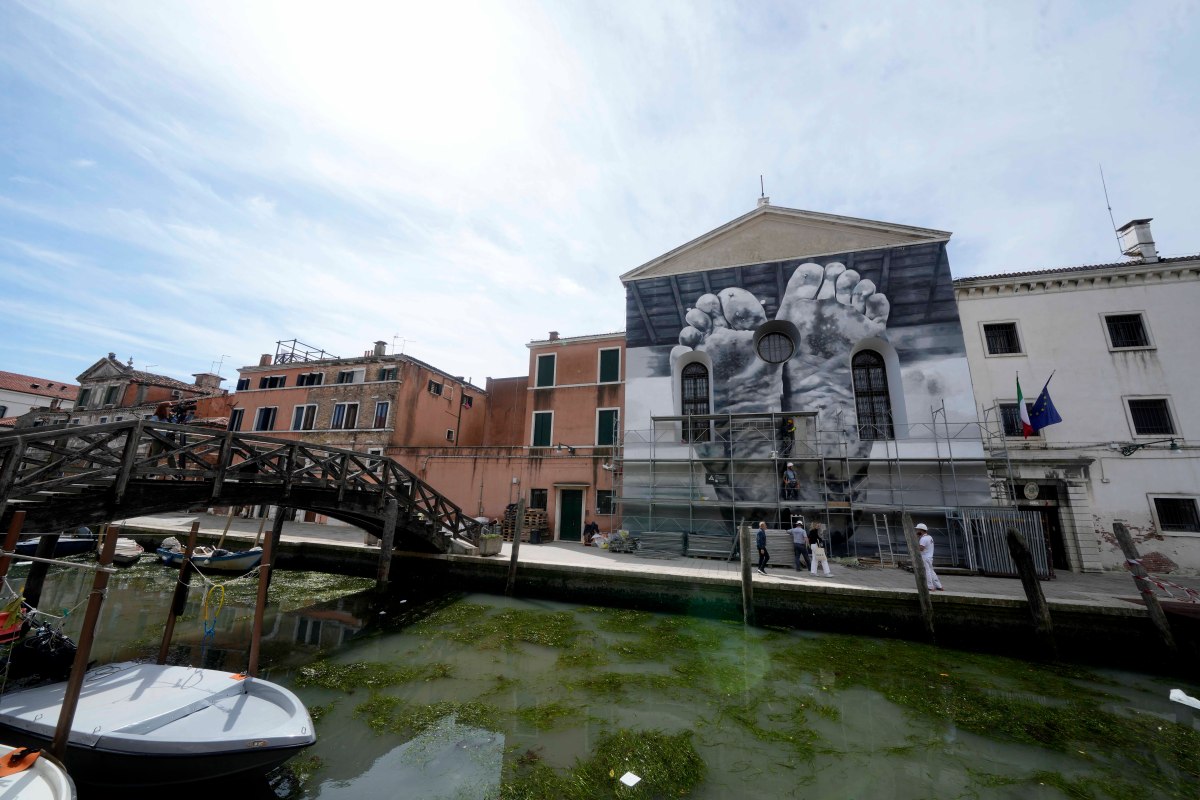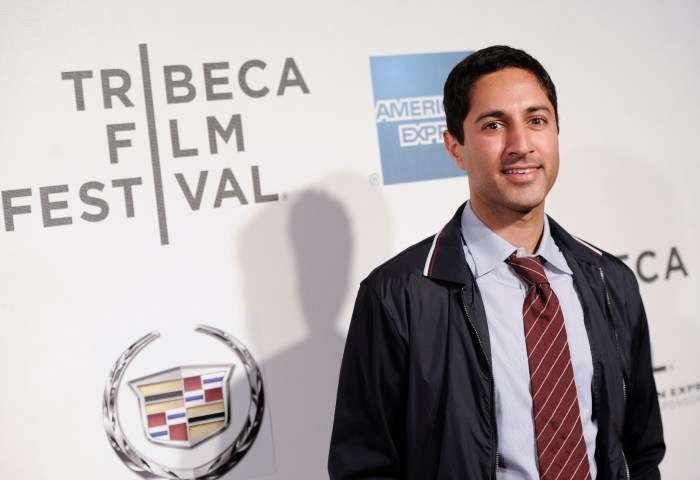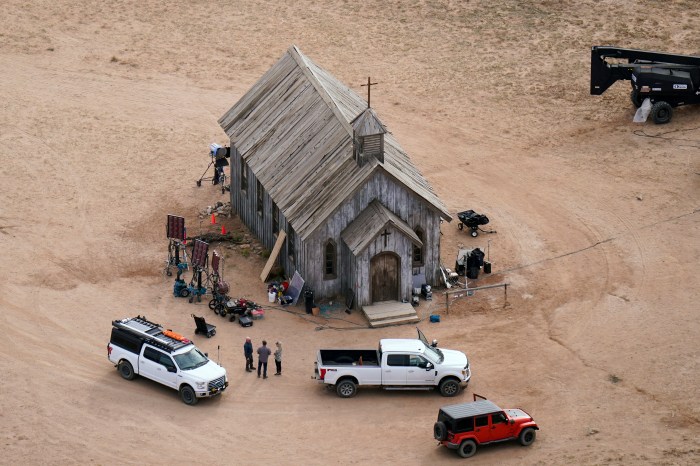VENICE, Italy (AP) — A pair of nude feet — dirty, wounded and vulnerable — are painted on the façade of the Venice women’s prison chapel, the work of Italian artist Maurizio Cattelan and part of the Vatican’s pavilion at the Venice Biennale contemporary art show in an innovative collaboration between inmates and artists.
That Cattelan is the lead artist is striking, given that his provocative life-size was figure of Pope John Paul II lying on his side, crushed by a massive meteorite, shocked Catholics when it was displayed at the 2001 Biennale. The new work, titled “Father,” is considered a thematic counterpoint to a performance piece he produced for the 1999 Biennale titled “Mother,” during which a religious ascetic was buried under sand, with only his hands clasped in prayer showing.
The Vatican’s culture minister, Cardinal Jose Tolentino de Mendonca, praised the work, which he noted recalled the naked, dirty feet of Caravaggio’s saints, while also being highly symbolic of the journey behind the Holy See’s pavilion, showing “the desire to dirty one’s feet, to show that whoever has feet has a carnality.’’
Tolentino de Mendonca, prefect of the Dicastery for Culture and Education, said the Vatican did not want to shy away from artists or works that might be considered iconoclastic, or critical of institutions like the Catholic church.
“Pope Francis calls us to dialogue. Dialogue is not just with the people who are mirrors of ourselves,’’ he told The Associated Press. “We did not seek out easy artists. We sought real artists. Cattelan’s work is very interesting under a religious point of view, because there is something iconoclastic in his work, but also in the mystic there is something that can be called iconoclastic, in the sense of deconstructing the religious representation.’’
Pope Francis, who met with over 200 artists in the Sistine Chapel last year, will see for himself when he visits the pavilion April 28, meeting inmates and artists, and according to the prefect not just the ones participating in the pavilion.
Cattelan, who wandered by the work as preview tours continued this week, declined to discuss his contribution but said the feet would be reproduced on a church in Rome in the future.
Cattelan’s space-specific artwork can be viewed by anyone who makes the trek to the Giudecca island prison. Those who want to see the other works will be guided through the prison on four daily tours by inmates, leaving bags and mobile phones in lockup. Closed Wednesdays, a maximum 600 people will view the pavilion each week during the Biennale’s run from April 20-Nov. 26.
On a recent tour, three inmates wearing elegant black and white smocks made by prison seamstresses guided journalists through an installation by Simone Fattal who transformed inmates’ poems into small ceramic plaques hung along a brick alleyway.
The tour continued to a prison coffee bar decorated with posters by onetime Catholic nun Corita Kent and into a gallery where Claire Tabouret has painted images from photographs provided by inmates of themselves and loved ones.
The conceptual artistic duo known as Claire Fontaine provided a neon eye with a slash through it for an outdoor corridor, and another neon sign that reads: “Siamo con voi nella notte,” (“We are with all of you in the night”).
That sign, in a courtyard where the inmates can gather during the day, provides a reassuring blue glow into the overlooking cells where they sleep.
“When we read this writing, it gives us encouragement, because there is someone with us day and night,” said one inmate named Manuela, who like the others declined to give their full names. “At night, we see the blue light, so we know it is there.”
The tour ended with a 15-minute film by Italian director Marco Perego starring his wife, actor Zoe Soldana, both of whom tagged along. Soldana plays an inmate in her final hours before release, and she took inspiration from the inmates who appeared in the film. To protect their privacy, the film can only be seen within the prison walls.
“What we wanted to provide for them was just a little bit of visibility, and to add a little bit of levity through art, which is exactly what we accomplished,’’ Soldana said.
Their desire for visibility was expressed in letters that the women gave the couple each night after filming, and through requests to pose with the couple for photos, which Soldana said they printed as keepsakes for the women.
Chiara Parisi, the director of the Centre Pompidou-Metz and one of the curators, said the project created a unique synergy between artists and inmates that opened lines of empathy. After the pavilion closes at the end of the Biennale, she said a coat of paint would likely cover Cattelan’s work, while the other pieces will find other venues; she said she hoped its larger legacy would be other similar initiatives.
“Through this pavilion, we hope to truly demonstrate the desire for freedom, the work to get out, to be free is something essential,” Parisi told AP. “Detention is a moment in their lives, and the artists say so, they themselves say so. Just a moment, a photograph, that should not impact what comes after, should not prejudice their future lives.”



















